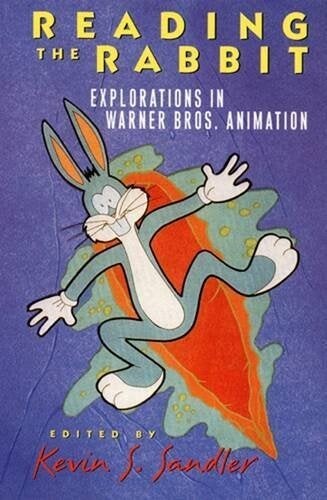Reading the Rabbit
Subtitle
Explorations in Warner Bros. Animation
Edited by Kevin S. Sandler
Despite the success of Bugs Bunny, Daffy Duck and their Looney cohorts, Warner Bros. animation worked in the shadow of Disney for many years. The past 10 years have seen a resurgence in Warner Bros. animation as they produce new Bugs Bunny cartoons and theatrical features like "Space Jam" as well as television shows like "Tiny Toon Adventures" and "Animaniacs." While Disney's animation plays it safe and mirrors traditional cinema stories, Warner Bros. is known for a more original and even anarchistic style of narration, a willingness to take risks in story construction, a fearlessness in crossing gender lines with its characters and a freedom in breaking boundaries. This collection of essays looks at the history of Warner Bros. animation; compares and contrasts the two studios; charts the rise and fall of creativity and daring at Warner's; and analyzes the ways in which the studio was for a time transgressive in its treatment of class, race and gender. It reveals how safety and commercialization have, in the end, triumphed at Warner Bros. just as they much earlier conquered Disney.
The book also discusses fan parodies of Warner Bros. animation on the Internet today, the Bugs Bunny cross-dressing cartoons, cartoons that were censored by the studio and the merchandising and licensing strategies of the Warner Bros. studio stores. Contributors are Donald Crafton, Ben Fraser, Michael Frierson, Norman M. Klein, Terry Lindvall, Bill Mikulak, Barry Putterman, Kevin S. Sandler, Hank Sartin, Linda Simensky, Kirsten Moana Thompson, Gene Walz and Timothy R. White.
Bio
Kevin S. Sandler is associate professor in the ASU Department of English's film and media studies program.
Praise for this book
A wide-ranging inquiry into an important area of contemporary scholarly interest, and also an engaging, well written and intelligently conceived collection.
Eric Smoodin, author of "Animating Culture: Hollywood Cartoons From the Sound Era"
... this rewarding anthology offers a diverse range of approaches to the Warner Bros output — historical critique; textual readings; commercial and institutional perspectives; and some aspects of reception — and is clearly a valuable contribution to animation scholarship, but more than this, it foregrounds and enhances the very distinctiveness of the cartoon itself.
Paul Wells Media, Culture & Society
